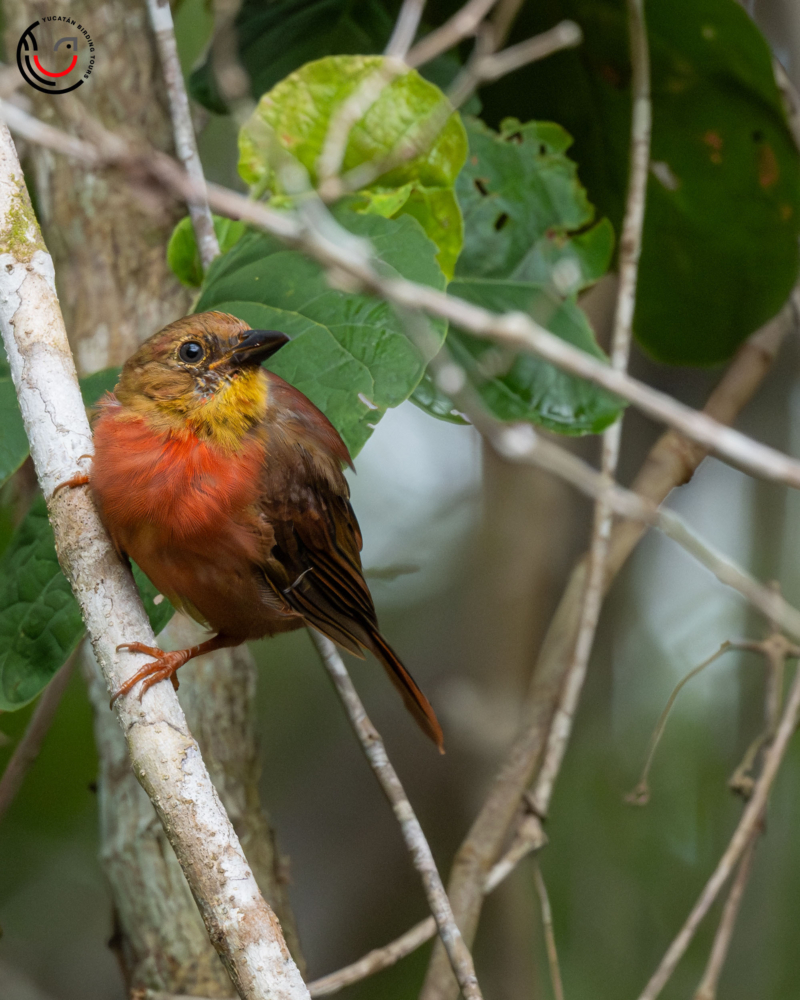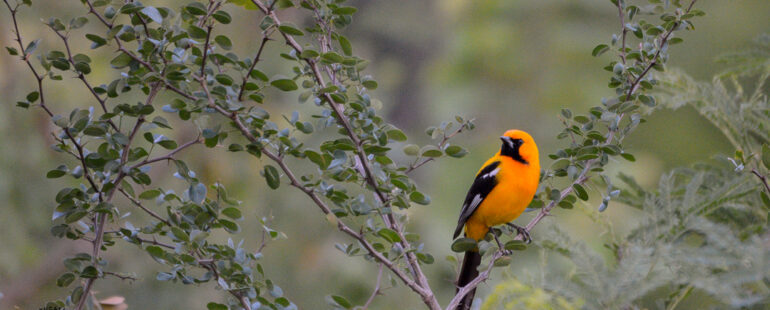3 DAY TOUR-SEPTEMBER 2025
This tour was designed for Ray McBride, a birder from Philadelphia who visited us for a few days of birding. We arranged three days exploring Mérida, Valladolid, Cobá and Felipe Carillo Puerto looking for many of the endemic birds plus other targets for him. Additionally, Ray also hired our local guide Melba Aguilera for an extra morning of birding in Cozumel Island.
Day 1.
Our day started just north of Mérida, in the Misnebalam road where we did an easy walk spotting 40+ species including: Black-throated Bobwhite, Common Ground Dove, Ruddy Ground Dove, Groove-billed Ani, Vaux’s Swift, Gray Hawk, Ferruginous Pygmy-Owl, Turquoise-browed Motmot, Yucatan Woodpecker, Ladder-backed Woodpecker, Great Kiskadee, Social Flycatcher, Mangrove Vireo, Yucatan Jay, Purple Martin, Barn Swallow, Cliff Swallow, Cave Swallow, Lesser Goldfinch, Olive Sparrow, Hooded Oriole, Orange Oriole, Altamira Oriole, Bronzed Cowbird and Cinnamon-bellied Saltator.
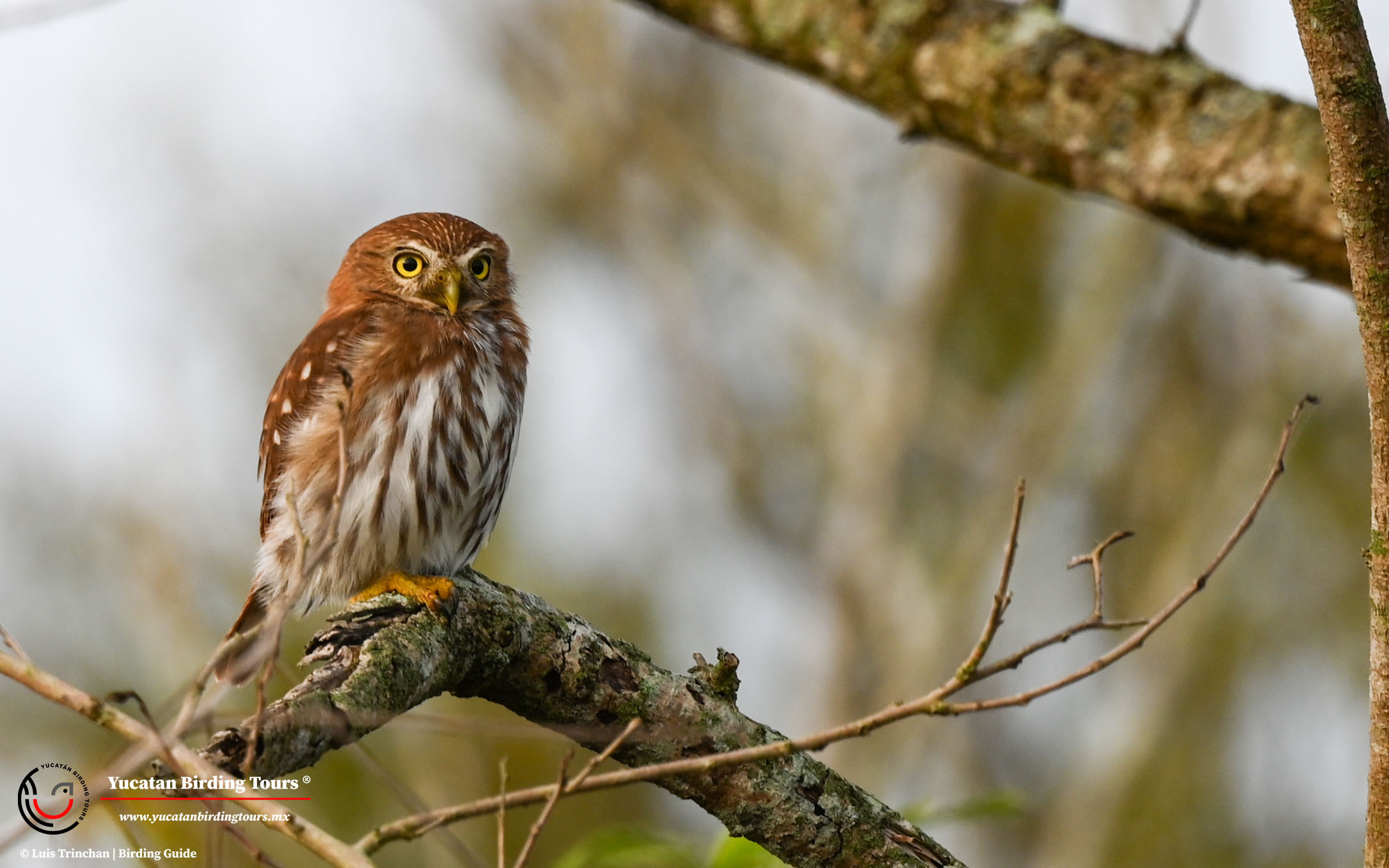
Ferruginous Pygmy-Owl (Glaucidium brasilianum).
Then, we moved to the coast to bird the mangroves and estuaries of Progreso, where we picked up another 40+ species with highlights including: Black-necked Stilt, Semipalmated Plover, Least Sandpiper, Semipalmated Sandpiper, Sandwich Tern, Royal Tern, American Flamingo, Wood Stork, Magnificent Frigatebird, Neotropic Cormorant, White Ibis, Tricolored Heron, Reddish Egret, Green Heron, Olive-throated Parakeet, Tropical Kingbird, Bank Swallow, Mangrove Swallow, Yucatan Gnatcatcher, Red-winged Blackbird, Northern Waterthrush and Mangrove Warbler.
After Progreso, we still needed the Mexican Sheartail and Yucatan Wren, so we moved to Chuburná looking for them.
On the way to Chuburná, I spotted a male Mexican Sheartail sitting on a power line, so we stopped, got some great looks, and kept going.
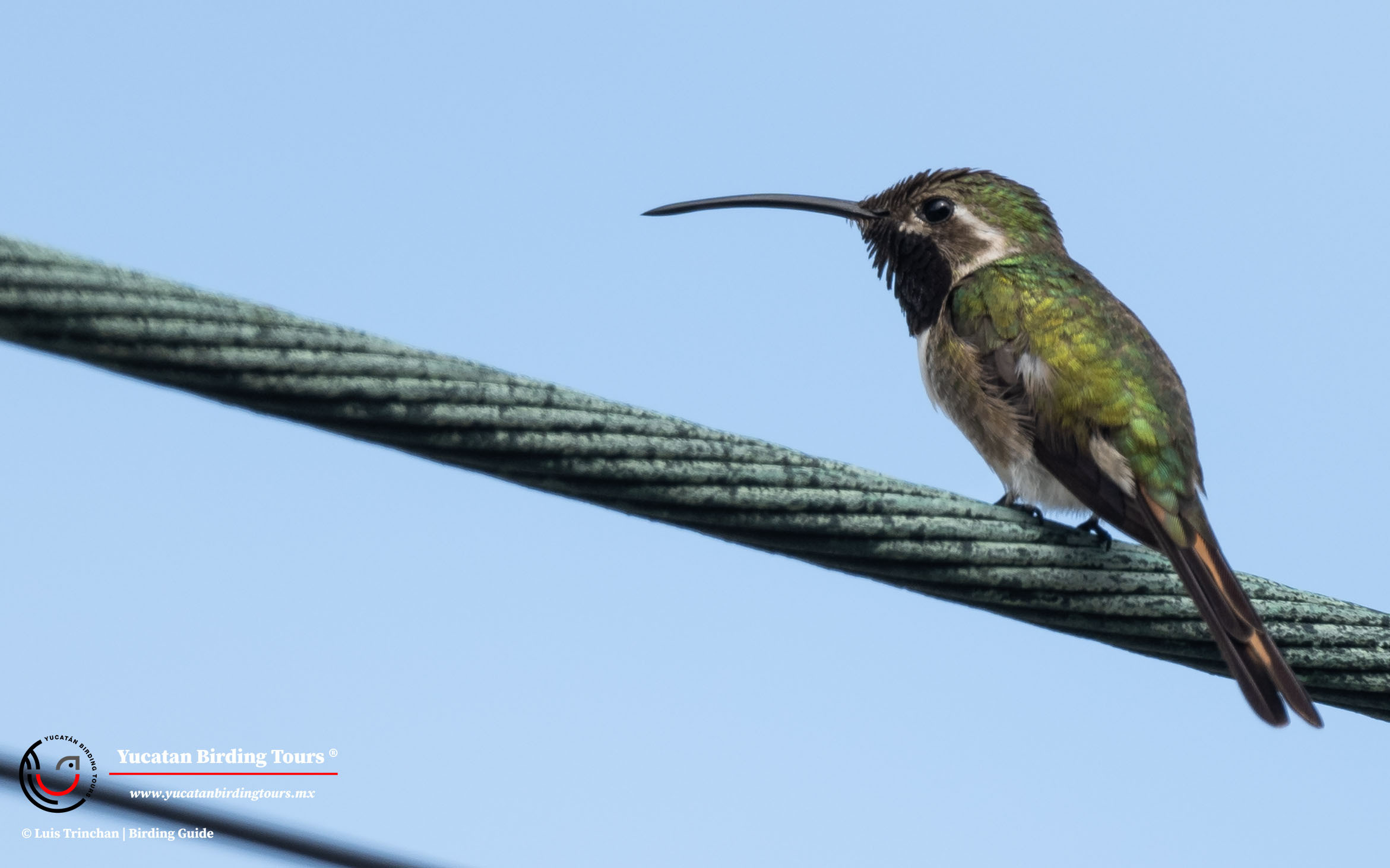
Mexican Sheartail (Doricha eliza).
Once in Chuburná, we finally found a pair of Yucatan Wrens that were feeding on cactus fruits and gave us great looks. We spent about 20 minutes birding the area and spotted other cool birds like Lesser Nighthawk, Spotted Sandpiper, Laughing Gull, American Herring Gull, Double-crested Cormorant, Great Egret, Brown Pelican, Osprey, Eastern Wood-Pewee, Mangrove Swallow, Tropical Mockingbird, Hooded Oriole and Great-tailed Grackle.
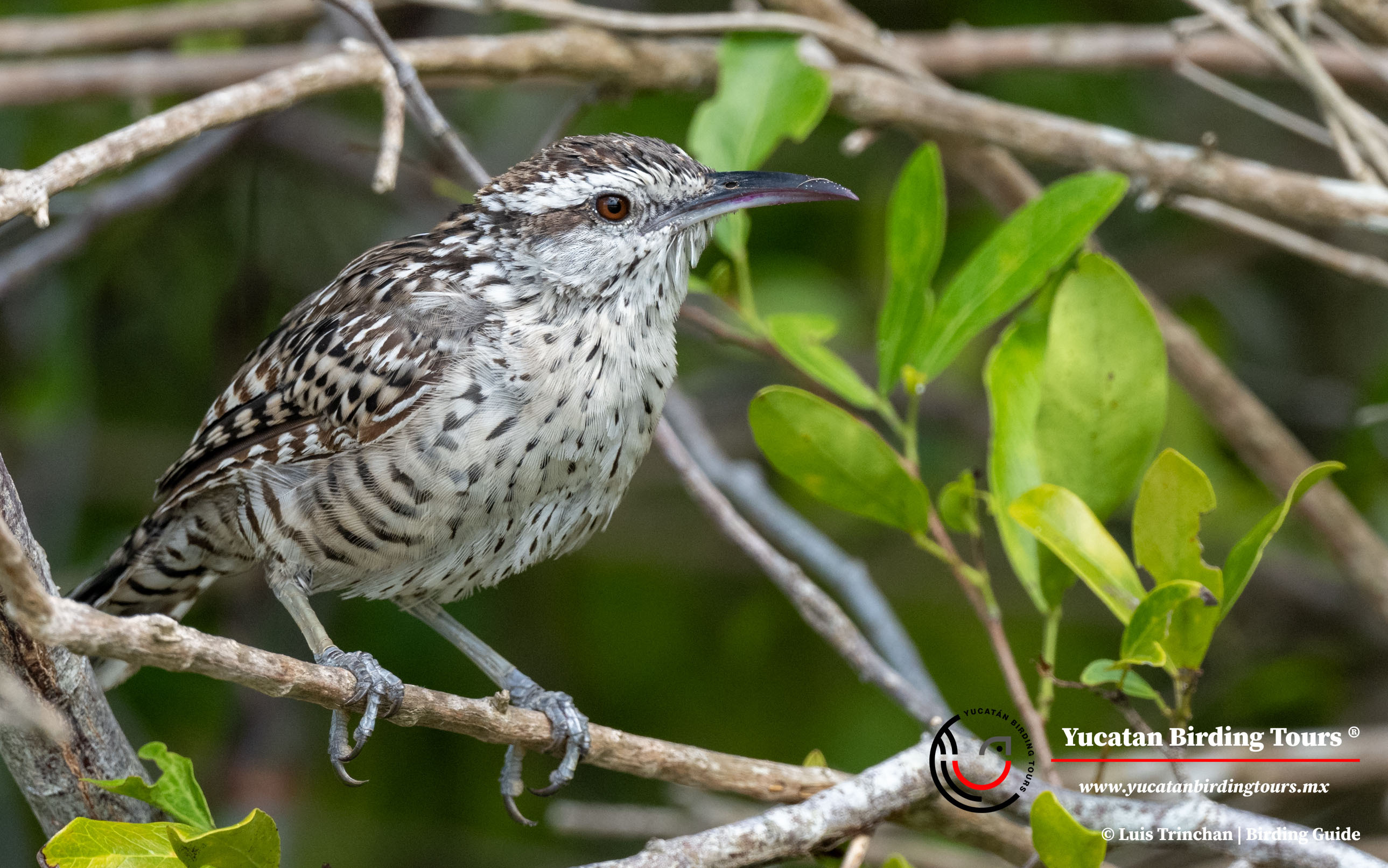
Yucatan Wren (Campylorhynchus yucatanicus).
On the way back to Mérida we also saw some really cool birds on the road like Plain Chachalaca, American Flamingos, Yellow-crowned Night-Heron and a Roseate Spoonbill.
We made a quick stop at my house in Mérida before heading to our next destination and while we were relaxing a bit, we got some good looks of the Green Jays and Clay-colored Thrushes that live in my backyard.
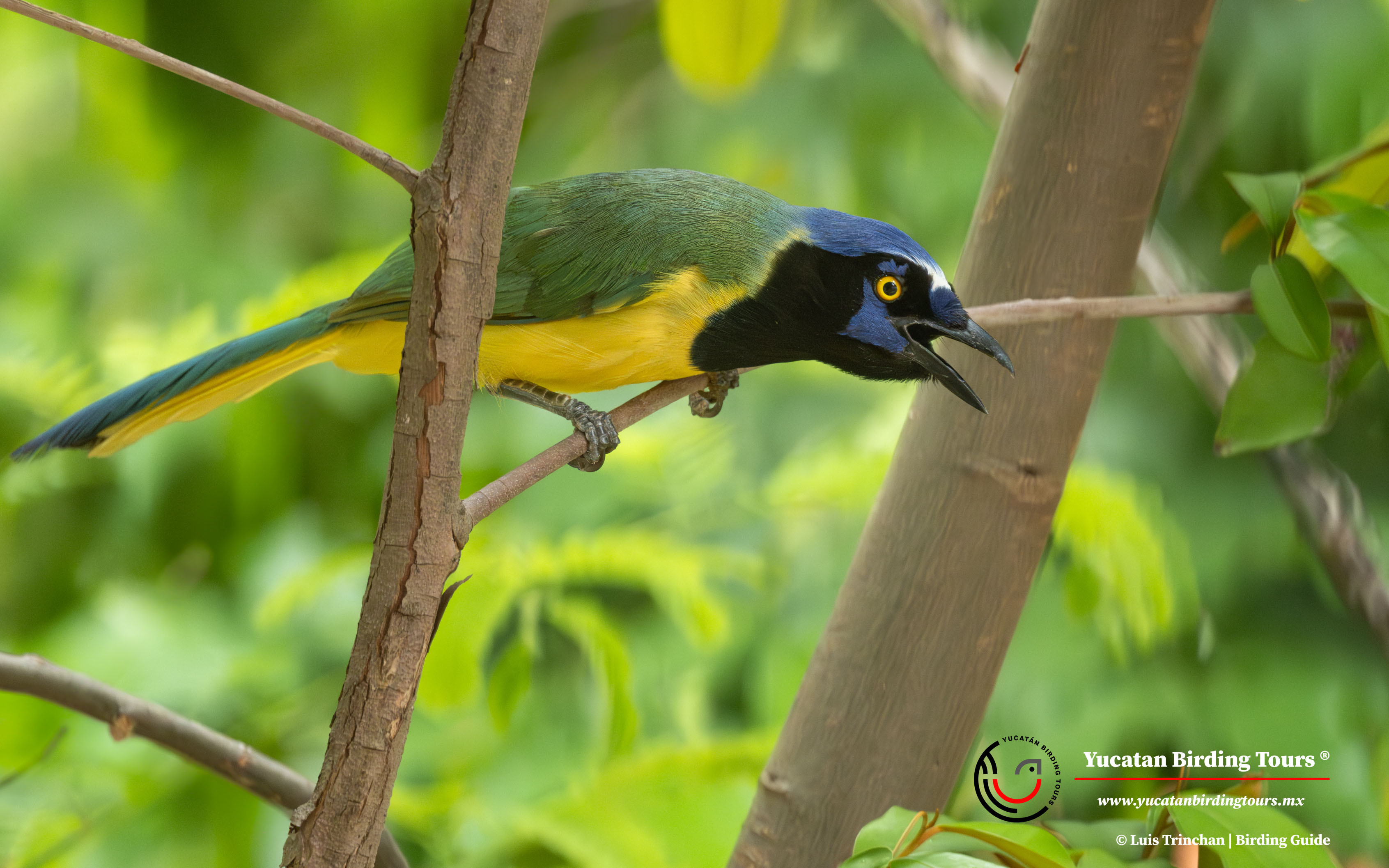
Green Jay (Cyanocorax yncas).
After a meal, we left Mérida for a 2-hour drive towards Xocen, where we had plans to spend the afternoon birding. As soon as we arrived in town, we were greeted by a pair of Bat Falcons perched on a telephone tower.
Then, we went on a two hour hike at Xocen Birding Trail where even with some tough rain, we spotted 40 species, including Canivet’s Emerald, Wedge-tailed Sabrewing, Buff-bellied Hummingbird, Roadside Hawk, Ferruginous Pygmy-Owl, Turquoise-browed Motmot, Yucatan Woodpecker, Ladder-backed Woodpecker, White-fronted Amazon, Olivaceous Woodcreeper, Northern Tropical Pewee, Couch’s Kingbird, Yellow-green Vireo, Green Jay, Blue-gray Gnatcatcher, Black Catbird, Clay-colored Thrush, Altamira Oriole, Melodious Blackbird, Lousiana Waterthrush, Red-throated Ant-Tanager, Gray-headed Tanager and Yellow-faced Grassquit.
Day 2.
For our second day, we left our cabins in Xocen and drove to Cobá. The plan was to bird the pond outside the archaeological site for about an hour before they open the ruins where our main target was the Ocellated Turkey.
So, during our hour birding the pond, we spotted 33 species with highlights including: Blue-winged Teal, Cinnamon Hummingbird, Spotted Rail, Purple Gallinule, Ruddy Crake, Limpkin, Black Tern, Least Grebe, Anhinga, Neotropic Cormorant, Least Bittern, Snail Kite, Gray Hawk, Belted Kingfisher, Yellow-bellied Elaenia, Great Kiskadee, Tropical Kingbird, Brown Jay, Hooded Oriole, Blue-gray Tanager and Morelet’s Seedeater.
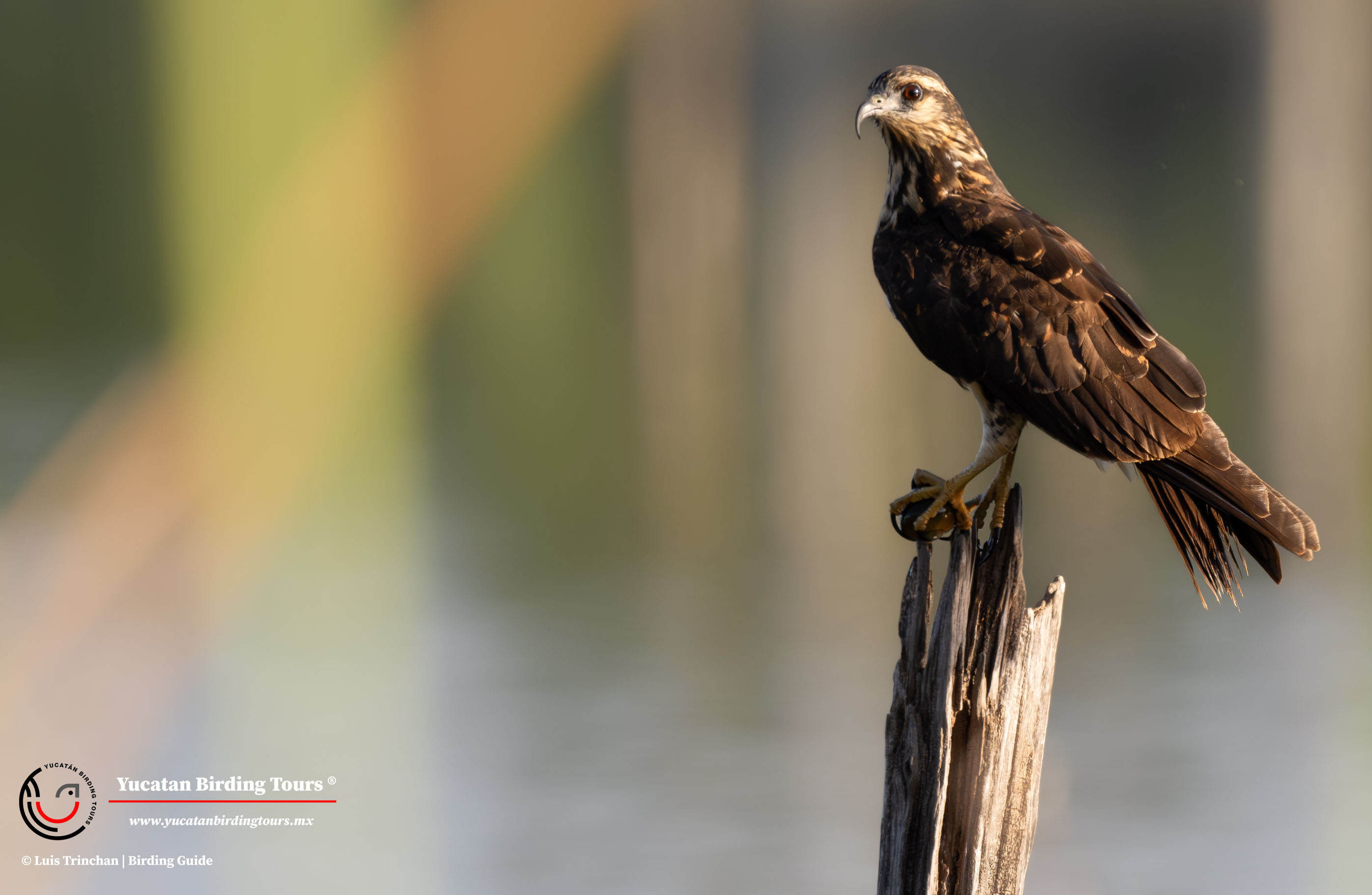
Snail Kite (Rostrhamus sociabilis).
After a successful first walk, we went into the ruins for another two and a half hours of birding around this ancient maya site, there, we picked up 40+ bird species, including: Ocellated Turkey, White-tipped Dove, Squirrel Cuckoo, White-bellied Emerald, Black-headed Trogon, Olive-throated Parakeet, Olivaceous Woodcreeper, Red-capped Manakin, Masked Tityra, Northern Bentbill, Eye-ringed Flatbill, Boat-billed Flycatcher, Rufous-browed Peppershrike, Lesser Greenlet, Brown Jay, White-bellied Wren, Black Catbird, Scrub Euphonia, Yellow-throated Euphonia, Lousiana Waterthrush, Kentucky Warbler, Hooded Warbler, Blue-gray Tanager and Black-headed Saltator.
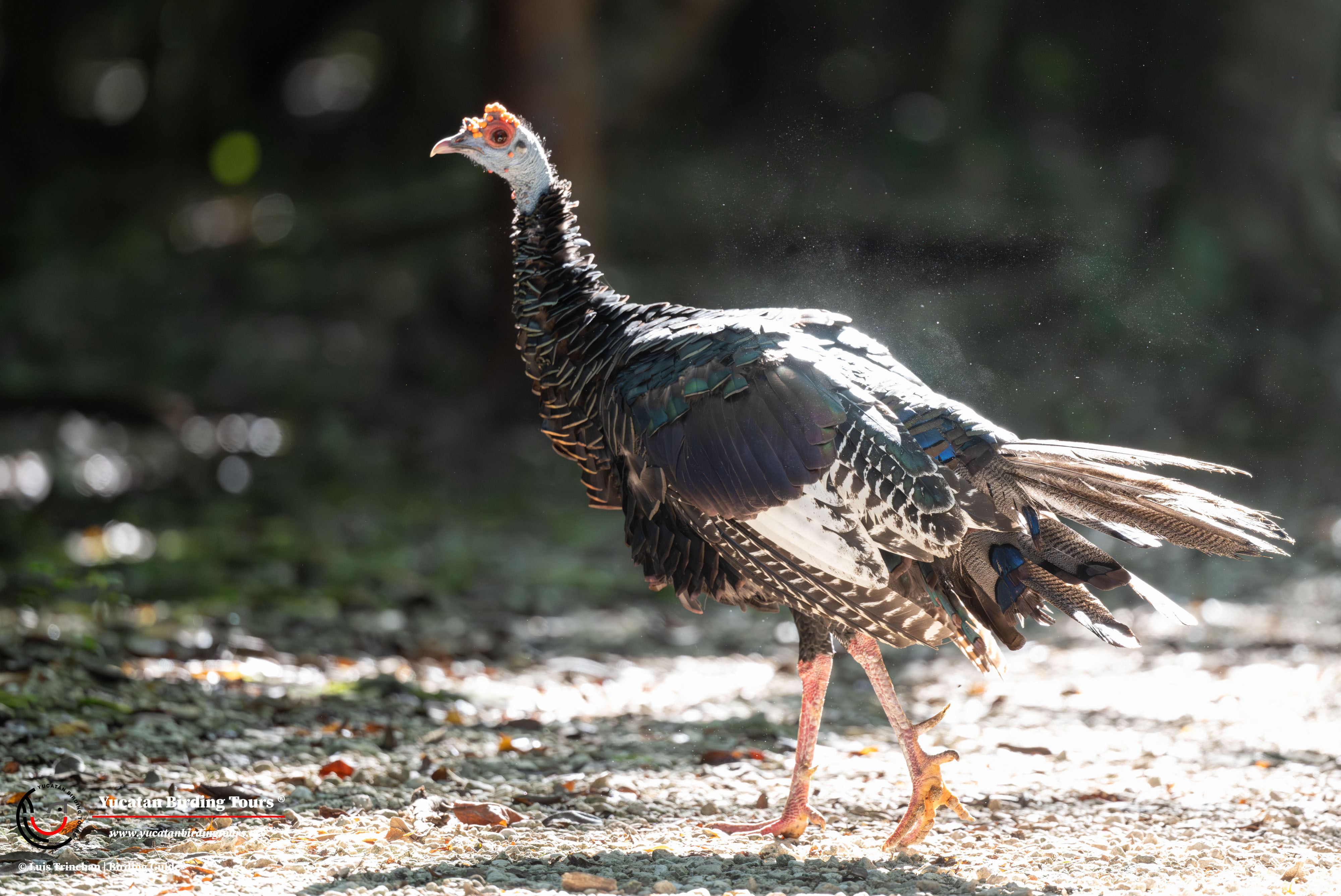
Ocellated Turkey (Meleagris ocellata).
Having had a great morning in the ruins, we left for another two-hour drive, this time, to Felipe Carillo Puerto, our next destination and one of my favorite birding spots in the Peninsula.
We visited the “Siijil Noh Ha” Reserve, just 10 minutes south of the town, this community-based project preserves a huge amount of forest, home to more than 240 bird species. During our visit there and a little less than two hours, we spotted 40+ species, including: Squirrel Cuckoo, Northern Jacana, Roadside Hawk, Lesson’s Motmot, Turquoise-browed Motmot, Keel-billed Toucan, Northern Plain-Xenops, Northern Bentbill, Eye-ringed Flatbill, Tawny-crowed Greenlet, Red-eyed Vireo, Brown Jay, Mangrove Swallow, Spot-breasted Wren, White-bellied Wren, Black Catbird, Green-backed Sparrow, Worm-eating Warbler, Black-and-white Warbler, Prothonotary Warbler, Hooded Warbler, Red-crowned Ant-Tanager, Red-throated Ant-Tanager and Gray-throated Chat.
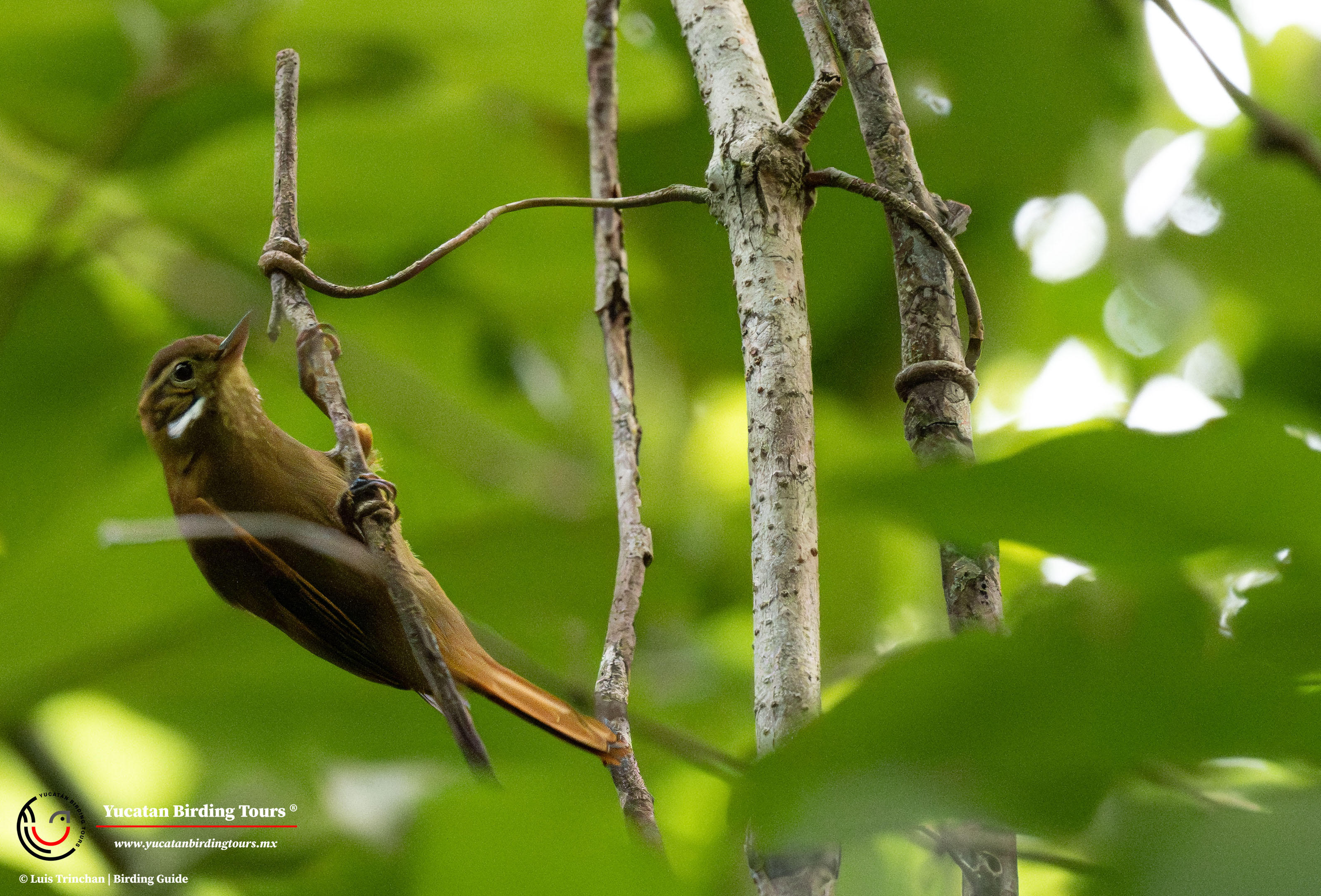
Northern Plain-Xenops (Xenops minutus).
On the way out of the reserve, we made another stop where we added a few more birds to the list like Common Nighthawk and Rose-throated Becard.
Day 3.
On our last day birding together, we had planned to visit the same reserve, this time, in the morning when bird activity is at it’s best. Our first walk on the road outside of the main reserve, resulted in 62 species of birds, including: Wedge-tailed Sabrewing, Black-headed Trogon, Gartered Trogon, Lesson’s Motmot, Turquoise-browed Motmot, White-crowned Parrot, Yellow-lored Amazon, Mayan Antthrush, Ruddy Woodcreeper, Ivory-billed Woodcreeper, Northern Plain-Xenops, Red-capped Manakin, Masked Tityra, Northern Schiffornis, Rose-throated Becard, Stub-tailed Spadebill, Northern Bentbill, Eye-ringed Flatbill, Yellow-olive Flatbill, Bright-rumped Attila, Tawny-crowned Greenlet, Mangrove Vireo, Green Jay, Brown Jay, Long-billed Gnatwren, Spot-breasted Wren, Carolina Wren, Green-backed Sparrow, Ovenbird, Black-and-white Warbler, Prothonotary Warbler, Hooded Warbler, Rose-throated Tanager, Red-crowned Ant-Tanager, Red-throated Ant-Tanager, Gray-throated Chat, Blue Bunting and Gray-headed Tanager.
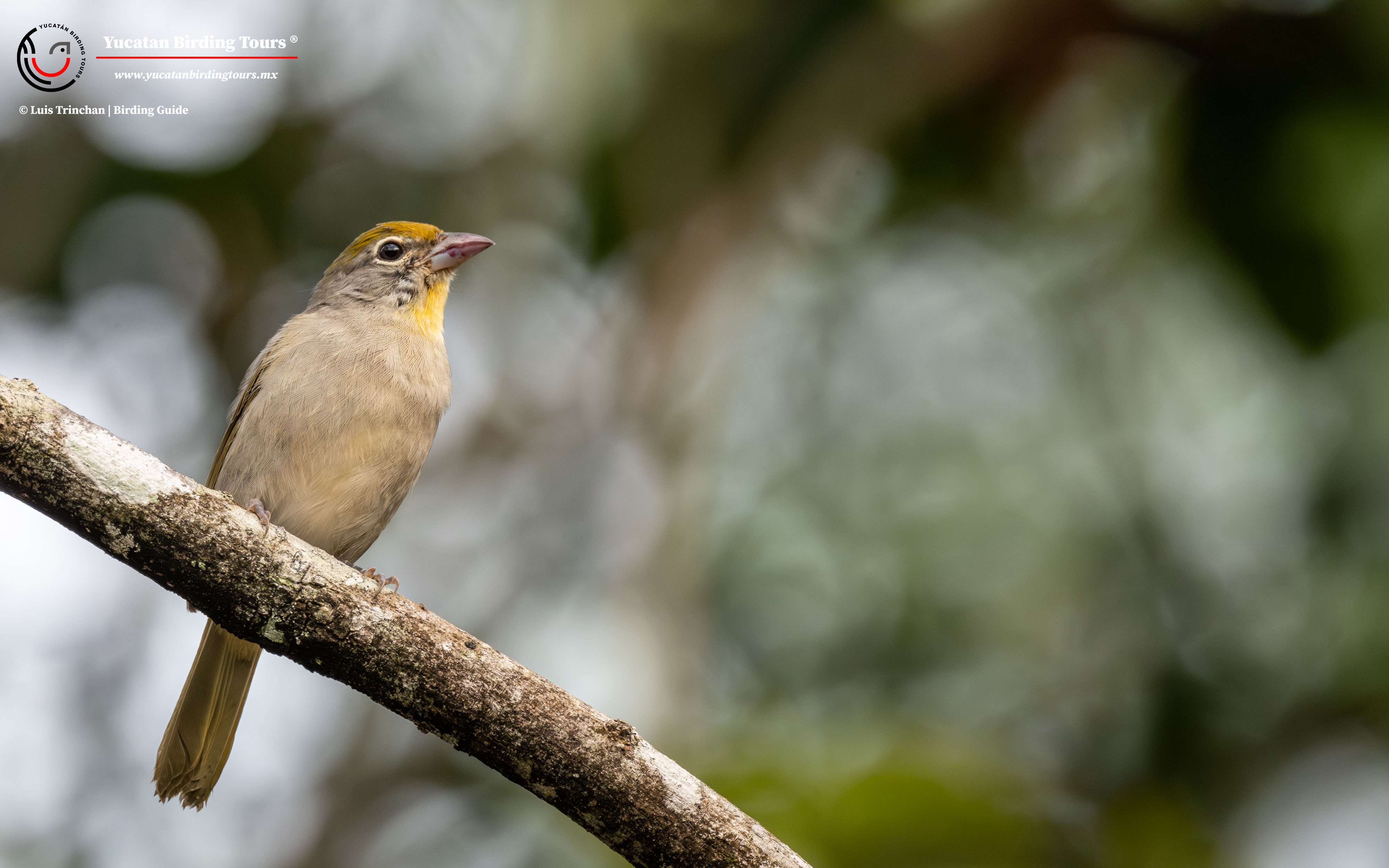
Rose-throated Tanager (Piranga roseogularis).
Then, we went into the reserve for another half an hour, it was pretty quiet (you could guess birds knew what was coming). We barely saw 13 species in 30 minutes and rain was about to start, me and Ray were about to hop in the car and before I sat, I looked up to the sky as I saw a silhouette above my head, “KING VULTURE! KING VULTURE!” I started screaming as we were both getting some of the most beautiful looks at this astonishing raptor soaring slowly.
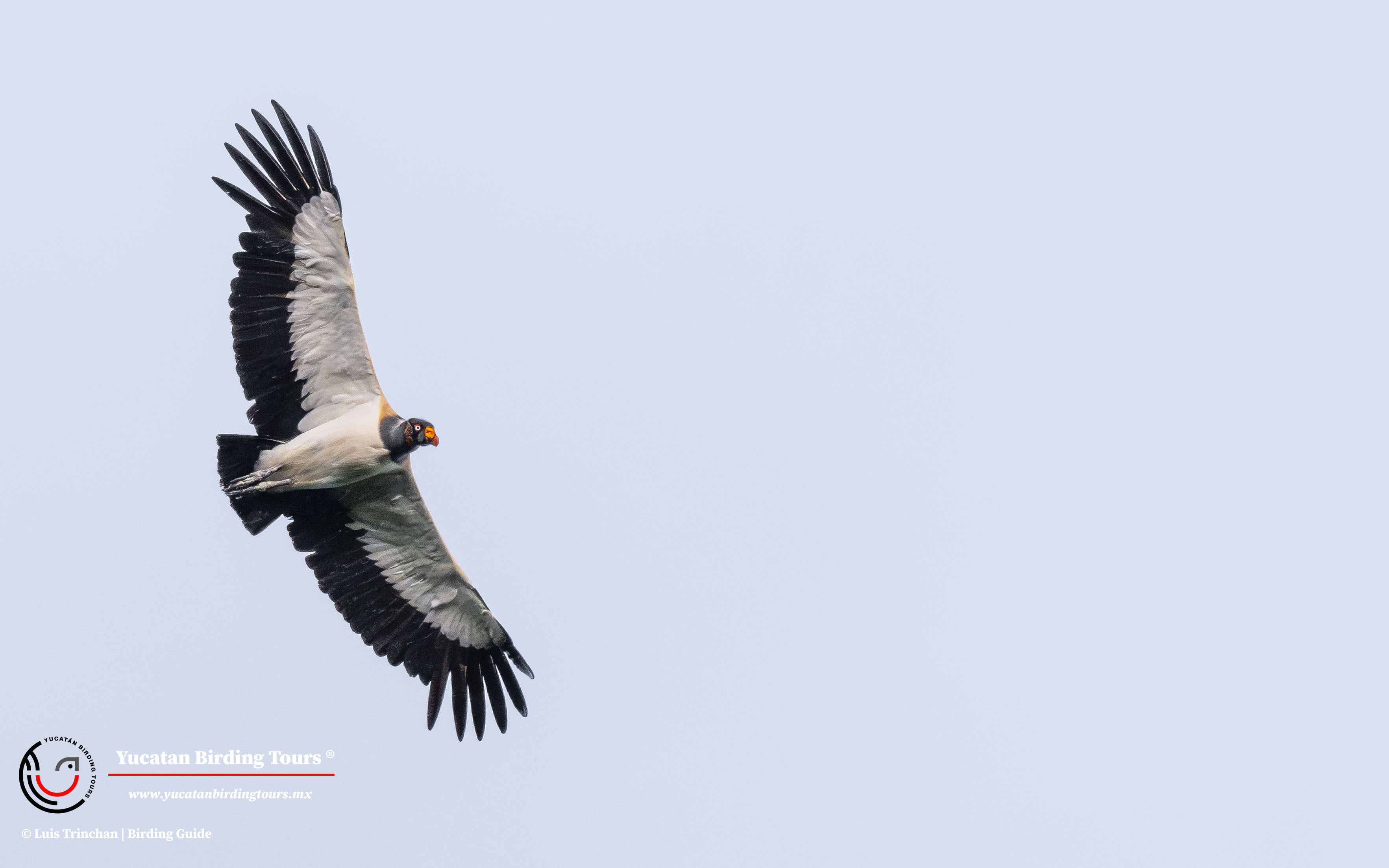
King Vulture (Sarcoramphus papa).
This marked the end of the tour for me, as I took Ray to Playa del Carmen so he could catch a ferry to get to Cozumel Island and then bird the next morning with our local guide Melba Aguilera.
Ray and I, managed to get 166 bird species in total. He also added the Cozumel endemics and specialties with Melba.
Written by Luis Trinchan Guerra.





